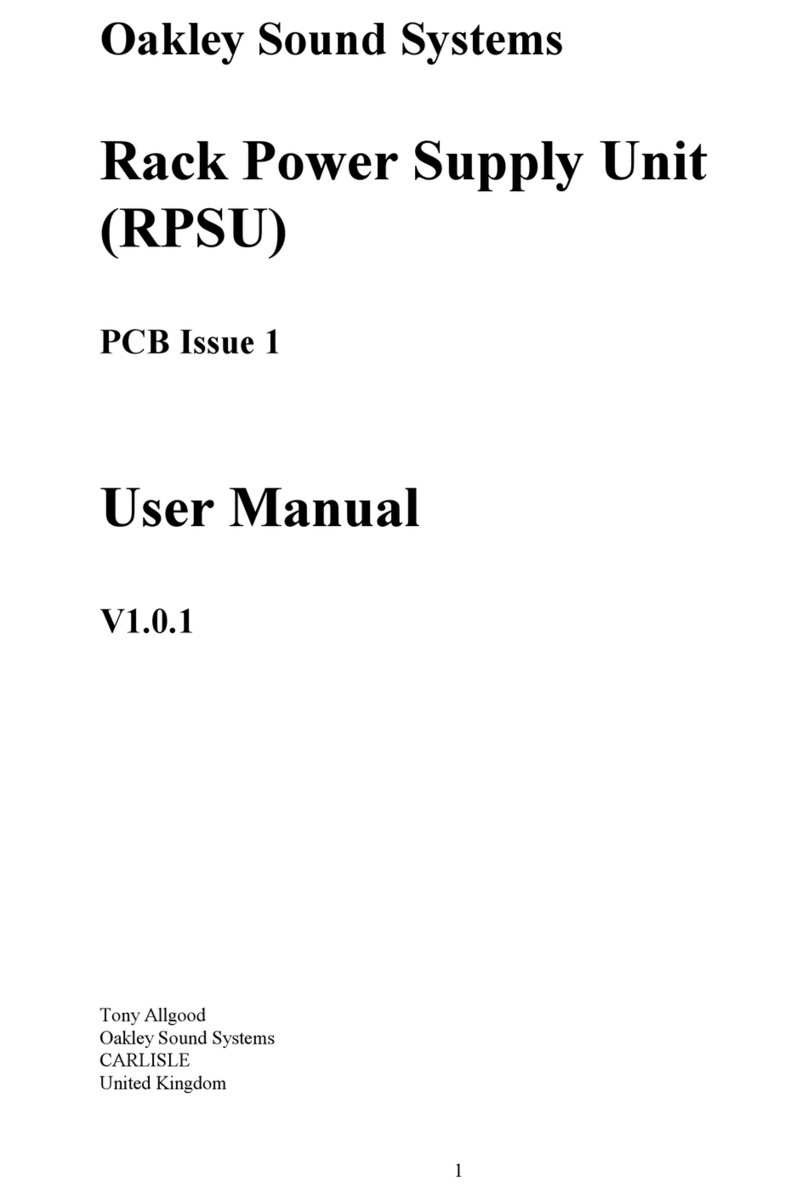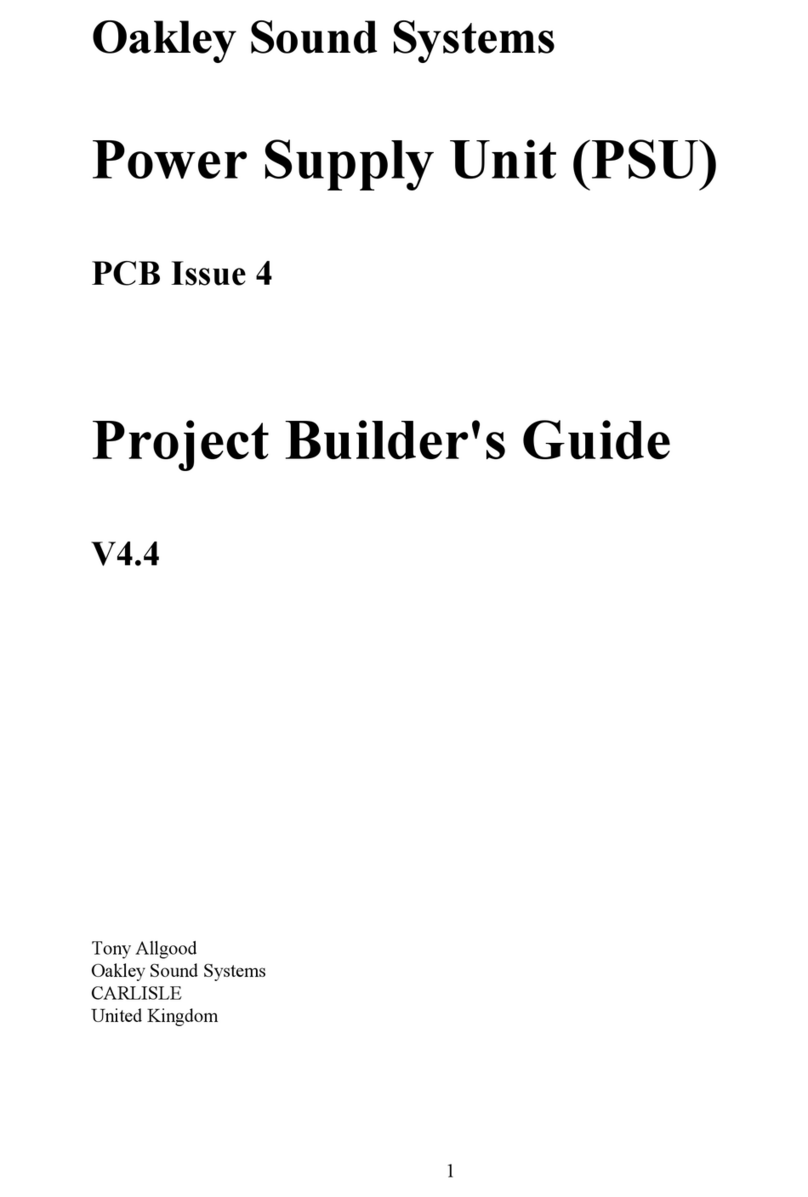Two sets of screw terminal blocks are provided for connecting the low voltage AC power
source to the board and the optional power switch. If you are using a single phase wallwart to
power the PSU module than you need only to use two terminals per terminal block.
The PSU2 board uses chunky individual screw terminals for the outputs. These allow good
solid connections to suitable ring terminals which are crimped onto your connecting wires.
Four output terminals are provided, +15V, 0VA, 0VB, and -15V. 0VA and 0VB are
connected together on the PSU2 board. I recommend that the metal panel the PSU module is
mounted onto be securely connected to 0V. This can be done either via the PSU2's 0VA or
0VB terminal, or using a suitable point on your distribution system.
The power supply has two integral fuse holders in case of a problem with the power supply
circuitry itself. Two fuses are needed if you are using full wave rectification, but only one, F1,
is required for ordinary half wave rectification. The fuse type should be a slow blow or anti-
surge type. The size is 20mm. It should be rated at between one and two times the maximum
current of your wallwart. Thus a 500mA AC output mains adapter should have a fuse that is
rated between 500mA and 1A, ideally 750mA. A 1A linelump should have a fuse that is
between 1A and 2A, ideally 1.25A.
Two on-board LEDs, a red or orange one for +15V, and a green one for -15V, provide a
quick visual reference that all is well. These two LEDs could be fitted externally to the board
and be mounted on a front panel. A third LED is supported, normally a red one, which lights
when any AC power is applied to the unit. This would normally be mounted on the outside of
the unit alongside the AC power switch and as such the PSU2 makes space for a 0.1”
(2.54mm) two way header to connect to this LED.
The board has four mounting holes for stable placement onto your modular case. Care should
be taken so that the board's various board mounted components do not come into contact with
any part of your modular's enclosure. Use of 8mm hex spacers between the board's bottom
surface and the panel is the preferred option.
The PSU2's output terminals must be connected to the modular's power distribution system
with the shortest and thickest wires possible. I normally use 24/0.2 wire but the both the 1/4”
Faston blades and the screw terminals will support larger wires with the correct crimps.
Multiple Dizzy and MU-Dizzy boards should never be connected in daisy chain fashion. That
is, each Dizzy board should always go back to the PSU2 separately and with the shortest and
thickest wire you can use.
* A wallwart is the vernacular term for a low voltage mains adapter that plugs directly into the
wall. These take the form of a black plastic block that is shaped like an oversized mains plug.
It is called a wart simply because its appearance is somewhat uglier than a normal slimline
plug.
** A linelump does the same ob as a wallwart but it generally can handle greater currents.
Because of its increased size it cannot be made so that it will safely fit into a plug socket
directly. Thus the adapter sits in a black plastic box and connects to the wall via a cable and
traditional mains plug. It is therefore a black plastic lump connected to a line. The Yamaha
PA-20 and PA-30 are such linelumps.
6





























